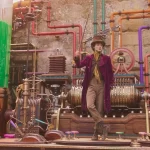TCM Classic Film Festival 2021: Part Three, by David Bax

For a long time, I had very little interest in seeing Bullitt, a movie I snobbishly thought of as a Steve McQueen vanity project, something he reverse engineered from the idea for a car chase scene. I softened my stance a little bit a number of years back when I caught up with Peter Yates’ 1973 The Friends of Eddie Coyle and figured, if he could make one of the greatest crime films of all time, he probably brought something worthwhile to this one too. These days, my snobbery is of a more sophisticated vintage and no longer precludes me from thinking a good car chase isn’t enough of a reason to make a movie. So I’m glad TCM aired Bullitt during this year’s festival because it gave me a chance to correct an oversight I didn’t even realize I’d made. As it turns out, the car chase in Bullitt is more than just a good excuse for a movie, it’s fucking killer. The rest of the movie is pretty cool, too; McQueen’s Bullitt is a detective assigned by a crooked politician (Robert Vaughn) to protect a mob informant and has to fend off attacks from both sides of that equation. But the car chase is the life source of the movie. The shots you’ve seen of the cars cresting over the hilly San Francisco streets is just the beginning. Once it gets out to the open highway and the pedals hit the floor, it takes off. It’s somehow precise and dangerous at the same time. When the passenger in the car Bullitt’s pursuing sticks a shotgun out the window at full speed and pulls the trigger, we’re in the backseat of Bullitt’s car, wincing as the windshield splinters. Bullitt, though, doesn’t even slow down. Neither does Bullitt.

Fulfilling the saucy pre-code requirement for this year’s festival is Tay Garnett’s Her Man, in which the marvelously named Helen Twelvetrees plays Frankie, a Havana prostitute who falls in love with a sailor on leave, Dan (Phillips Holmes), and then has to do her best to keep her pimp (Ricardo Cortez) from murdering him. As heavy as that sounds, Her Man is, most of the time, just a hangout movie, as playfully ephemeral as the opening titles written in sand and washed away by waves. As sympathetic as the film is to the lack of agency the world gives women like Frankie (“I ain’t no man. I wished I was,” goes her repeated line), Garnett prioritizes the comedic antics of Dan’s drunken compatriots (James Gleason and Harry Sweet), who persistently fight over a slot machine and a stolen hat. The whole boisterous affair climaxes in massive barroom brawl. If I’d queued up early to see this at the in-person festival, which one usually has to do for pre-code stuff, I’d have no complaints.

Taken as a work of detective noir alone, Jules Dassin’s The Naked City doesn’t hold a match to the greats of the genre. When a model is murdered in a high rise apartment, a veteran detective (Barry Fitzgerald) and an eager, new one (Don Taylor) follow the tips and clues in standard fashion while the case plays out in parallel form in the media and in public opinion. But, if you’re reading this website, there’s a good chance you’re already aware that that’s not what The Naked City is known for. Dassin and cinematographer William H. Daniels–with consultation from photographer Arthur “Weegee” Fellig–shot on location all over New York City, giving the whole thing a docudrama feel. Recognizable landmarks like the Williamsburg bridge are given star treatment but the most impactful inclusion is all the New Yorkers seen crowding the sidewalks, train platforms, etc. The Naked City recognizes that a city isn’t made up of street and buildings but of people.

It’s helpful that Chantal Akerman’s News from Home (1977) has subtitles. The only dialogue in the documentary, a disembodied reading of letters written to Akerman by her mother in Belgium while the filmmaker was living in New York City, is often drowned out by the sounds of car engines and subway trains. There’s a zero percent chance that’s the fault of a poor audio mix, though. In a film as ostensibly simple as this one, every decision must have been made with purpose and care. The content of those letters–which are accompanied by shots of the city that pointedly do not contain Akerman, with the possible exception of a reflection in a subway train window–will likely be familiar to anyone who has moved away from home. They’re full of updates about friends and family and sweet needling about return visits. But Akerman’s mother is not any anonymous mother. Her personality pokes through in ways that are, at first, easy to find humorous, like her go-to description of everyone, including herself, as always being “tired.” But you begin to miss her voice during the stretches–some long, some short–between letters. Here, Akerman’s formalistic conceit becomes clear. We can’t see her mother as she composes these words but neither can she see what we’re seeing, the life and world her daughter is living without her. How painful that must be for a parent. (Programming note: News from Home was paired with Akerman’s 1972 short “La Chambre,” a film so simple yet transporting in its beauty that I feel as if I dreamed it into existence.)




























